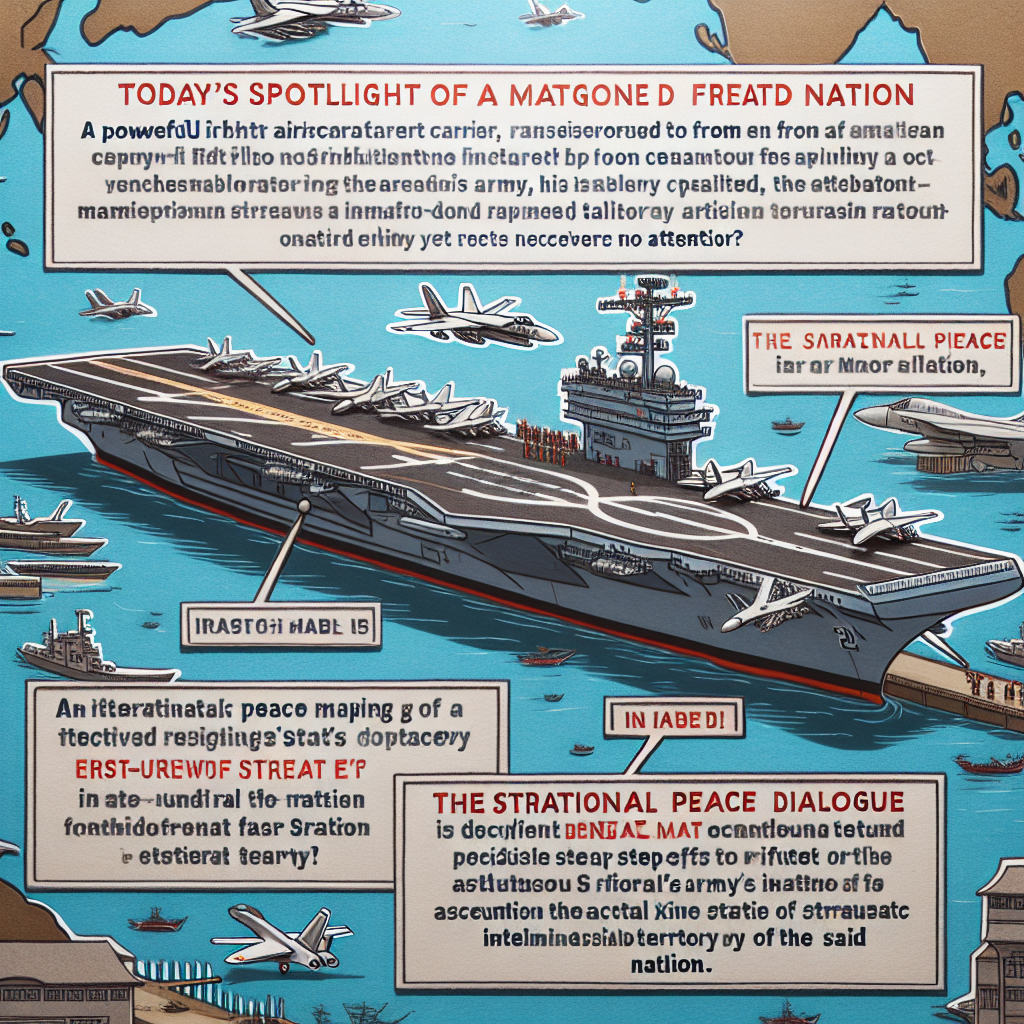Today’s focus is on China’s aircraft carrier flexing its muscles, only to be ignored by everyone! The Shangri-La Dialogue reveals the true bottom line of the PLA? The First Island Chain’s maritime strategy, with various countries taking concrete actions to deny the Taiwan Strait as China’s internal sea! Is not taking sides just mere lip service?
In the Shangri-La Security Dialogue, Taiwan has been in the spotlight for two consecutive years, with the absence of the Chinese Minister of Defense; today, we have invited Professor Ming Juzheng, Honorary Professor of Political Science at National Taiwan University, and Consulting Committee Member of a Taiwan think tank, Lai Yizhong, who personally participated, to share their on-site observations. Outside the conference, the U.S. military has a strong presence in the Indo-Pacific region, while China has two aircraft carriers and a large number of warships applying pressure to the First Island Chain.
What kind of situation is this? It led the former U.S. Assistant Secretary of State for East Asian and Pacific Affairs to call out, with the U.S., Japan, Australia, the Philippines signing a collective defense agreement, it is imperative.
China’s attempt to invade Taiwan first faces U.S. military intervention, how might China initiate a Pearl Harbor-style incident? Overseas Chinese scholars warn that China has secret orders, and it may be rehearsing on American soil right now.
The annual Asia-Pacific Security Summit Shangri-La Dialogue, held from May 30, saw the first absence of the Chinese Minister of Defense in six years, while the U.S. Secretary of Defense issued a signal to collectively defend allies in the Indo-Pacific, including Taiwan. The media described Taiwan as not having official representation but being the focus of the conference for two consecutive years.
Before and after the Shangri-La Dialogue, since late May, China’s Liaoning and Shandong, the two aircraft carriers, successively entered the Western Pacific and the South China Sea; facing the U.S. Navy’s two aircraft carrier strike groups, a standoff ensued in the Taiwan region. In mid-June, China’s dual aircraft carriers simultaneously appeared in the Western Pacific, with the Liaoning passing through the Second Island Chain for the first time, drawing international attention.
During the Shangri-La meeting, how do you see the almost simultaneous large-scale presence of PLA forces, including two aircraft carriers, disrupting the surrounding areas?
China continues the pressure along the First Island Chain, affecting the Yellow Sea, East China Sea, Taiwan Strait, and South China Sea. How does the professor interpret China’s intentions?
How does the professor view the dynamics of the PLA? On June 2, Taiwanese media reported linking warnings from relevant countries at the conference to messages from Taiwan’s national security leadership, suggesting that China aims to heavily pressure Taiwan, demonstrating an attempt to “internalize the First Island Chain,” seeking overall control from the Yellow Sea, East China Sea, Taiwan Strait to the South China Sea.
Due to China’s threats, the U.S. is defending Taiwan, with the strategy becoming clearer. Some say that if China invades Taiwan, it may first initiate a Pearl Harbor-style incident against important U.S. bases. Retired U.S. Four-Star General Keane warns that China is conducting the most comprehensive infiltration action in 250 years against the U.S., unprecedented in scope. Some seemingly random incidents may actually be China’s “exercises.”
How do you think the professor views this?
In June, the U.S. Defense Secretary, during a Congressional hearing, echoed warnings from the Shangri-La Talks, stating that “Communist China” is progressively advancing and preparing for an “Indo-Pacific war,” seeking to dominate the Indo-Pacific and global hegemony; the U.S. will deter with allies.
From the Trump administration to the Biden administration, the promotion of the AUKUS alliance between Australia, the UK, and the U.S. marks the first military alliance since World War II. Recently, Defense Minister Ratner, who served in the Indo-Pacific during 2021, proposed a defense agreement between the U.S., Japan, Australia, and the Philippines, indicating the urgency for the U.S. to establish a collective defense agreement in Asia. In 2021, Ratner highlighted Taiwan’s importance during his tenure at the Defense Department, stating that Taiwan is a crucial point in the First Island Chain, anchoring the U.S. allies and partners, which is essential for regional security and defending key U.S. interests in the Indo-Pacific.
Why did Ratner make this proposal? What impact does it have on the situation in the Taiwan Strait?
At the Shangri-La Dialogue, French President Macron brought up Taiwan, warning China to prevent North Korea’s involvement in the Ukraine conflict, or else NATO would deepen its involvement in Asia, provoking China.
NATO Secretary-General, in a speech in London on the 9th, expressed concern over China’s threat and urged member countries to increase military expenditure, emphasizing that there is not just a European-Atlantic war zone; we must recognize that everything is interconnected with the Pacific region.
During Biden’s term in 2021, the U.S. Defense Secretary expressed hope for Europe’s military prowess and the UK’s aircraft carriers to be more effective beyond the Indo-Pacific; the Trump administration urged Europe to “focus on Europe, not Asia.” How do you see NATO’s role in future Indo-Pacific security?
Feel free to subscribe to “News Insight,” like, subscribe, and share.

